Monroe County sees COVID-19 cases rise: “…could be our worst surge yet—it’s terrible.”
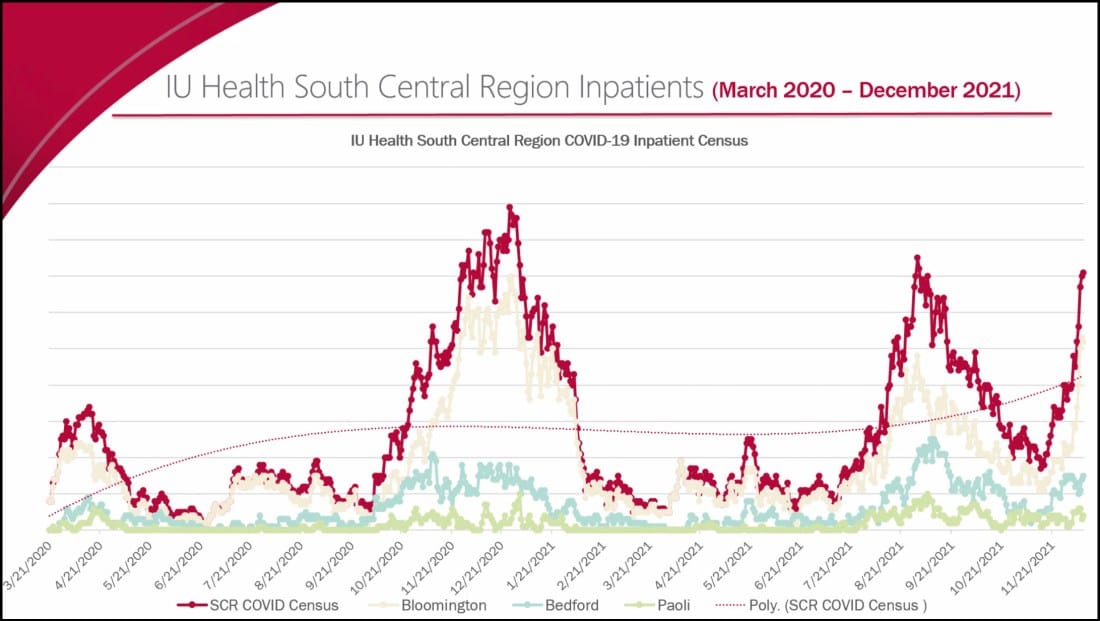

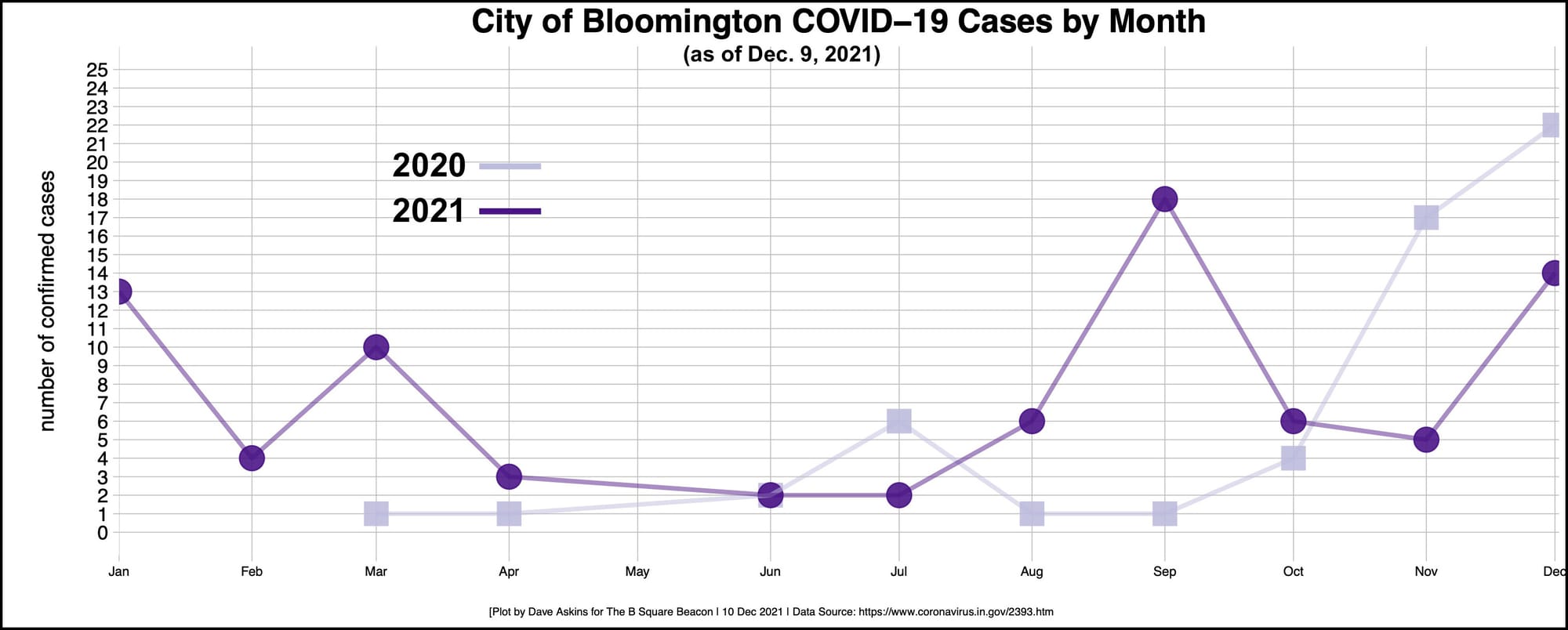
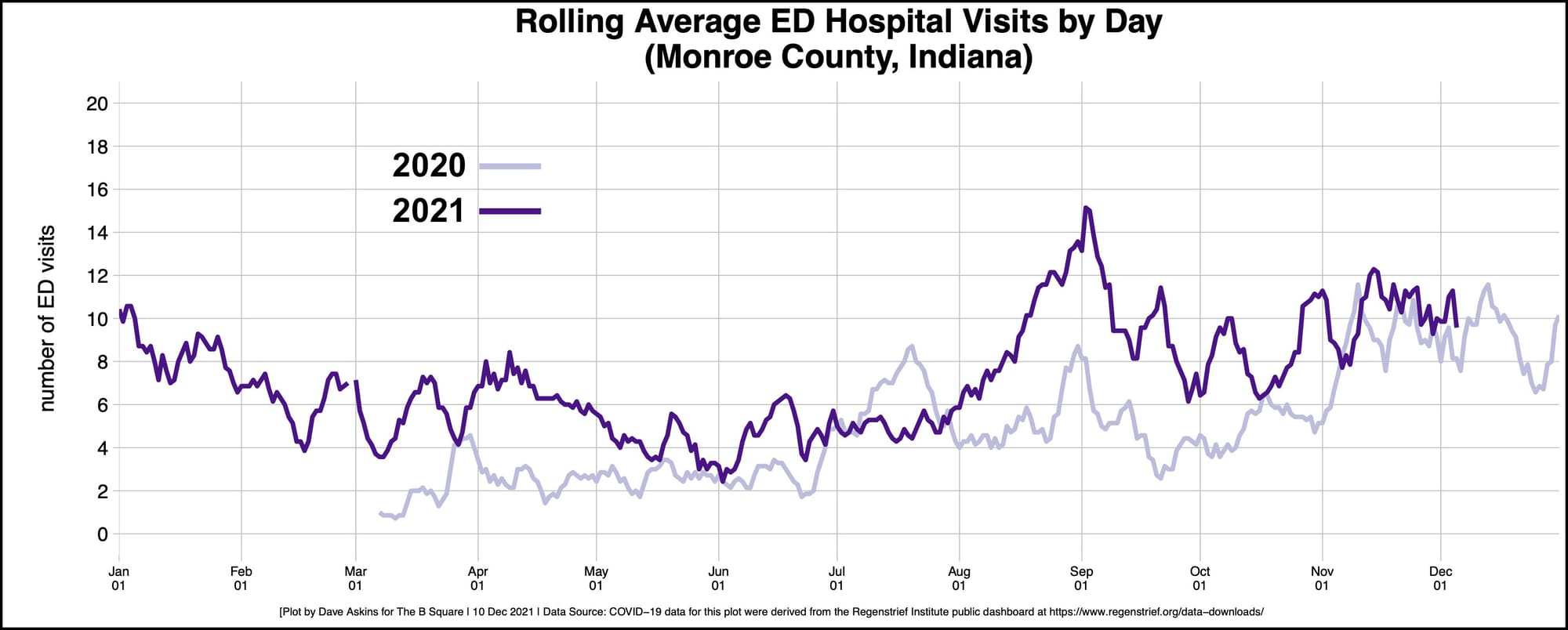
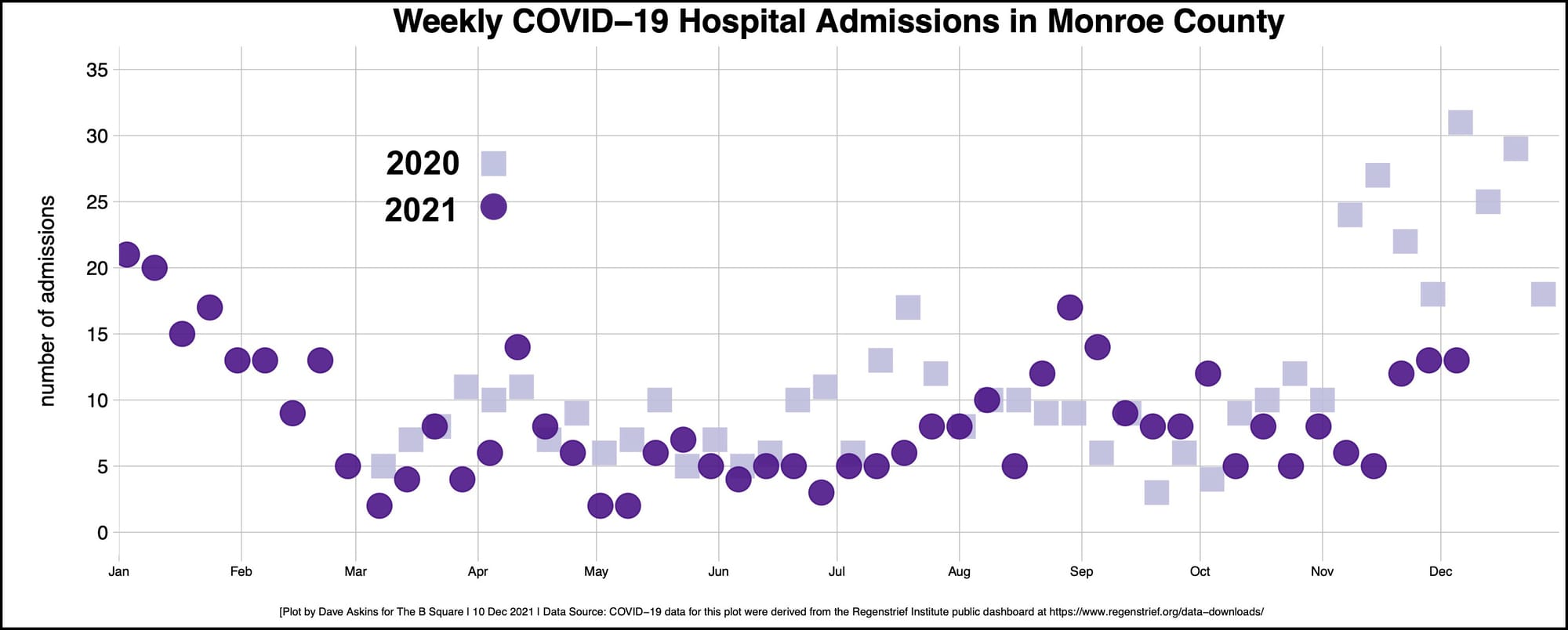
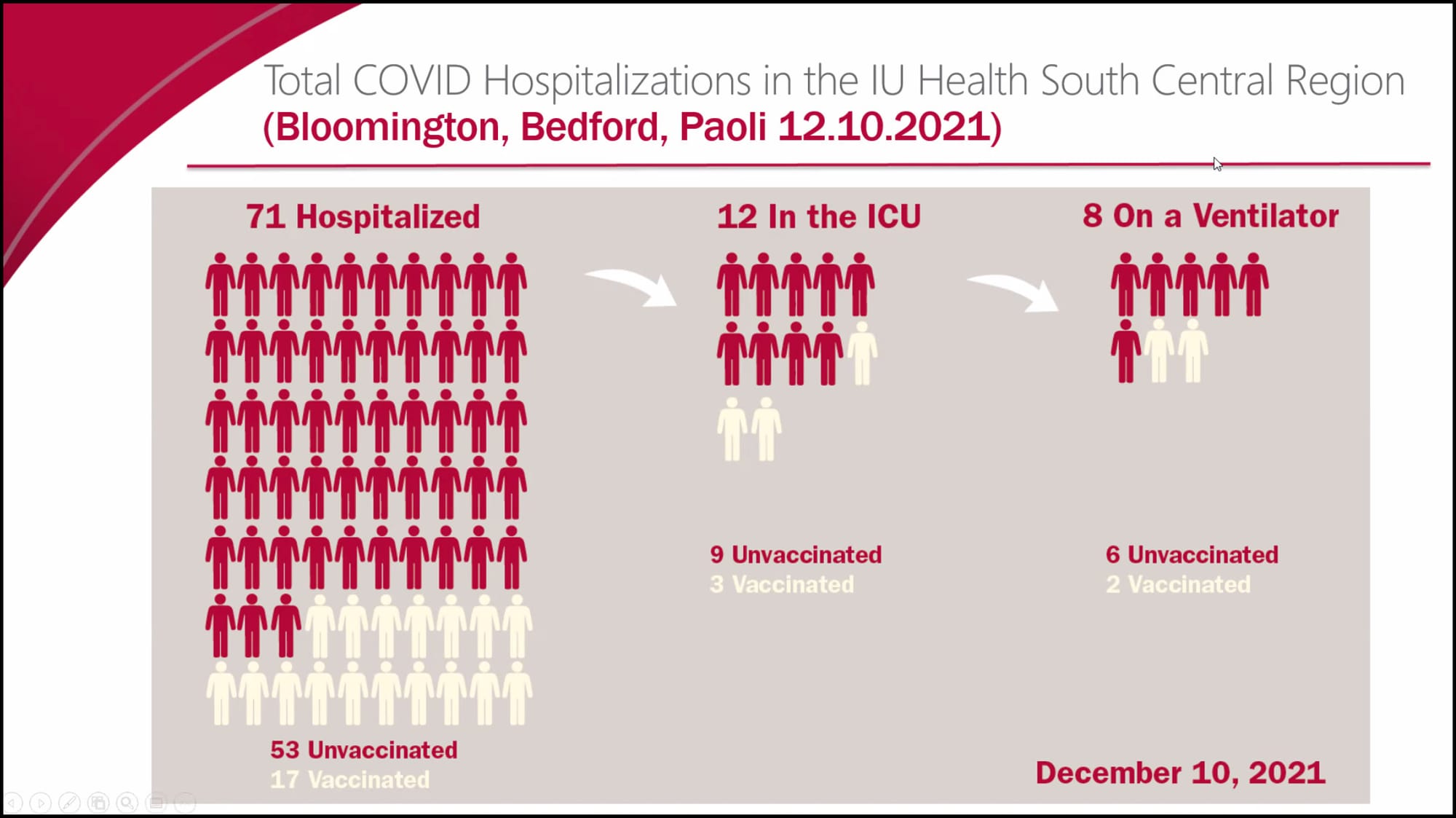
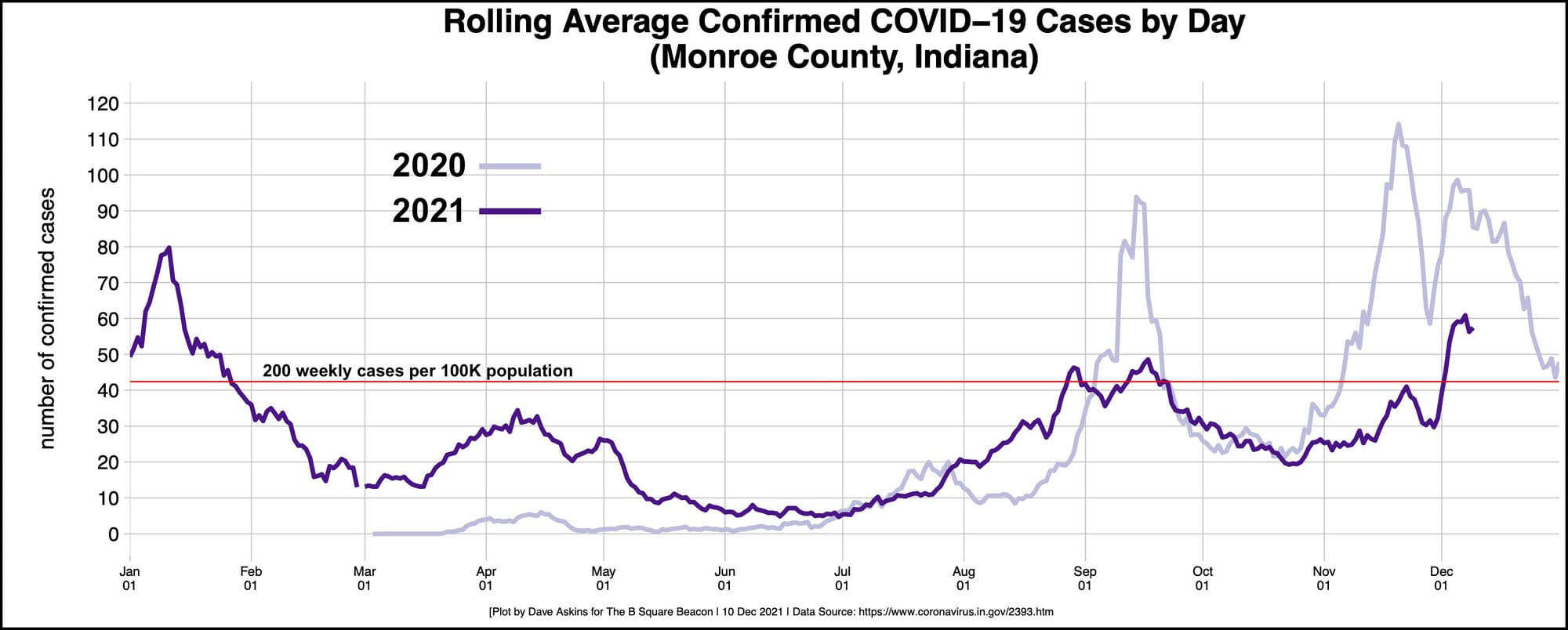
At Friday’s news conference of local leaders on COVID-19 pandemic response, Bloomington mayor John Hamilton reacted to the relatively positive picture that Indiana University health officer Aaron Carroll had just painted about the situation on campus.
“I’m really just echoing what Dr. Carroll said, which is: Probably one of the safest places to be is on campus. And that their experience is different from the experience of the community as a whole.”
The difference between the world of the campus and the broader community was something Carroll was quick to confirm. Carroll said, “I completely agree.” Carroll added, “Indiana is in a surge, there is no question. And looks like it could be our worst surge yet—it’s terrible.”
One measure of the increasing level of concern about pandemic trends was the fact that Friday’s news conference was held at all. It was supposed to be an off week in the every-other-week schedule of media calls.
On Friday, Hamilton quoted Indiana governor Eric Holcomb about the reason for the increase in the case numbers, saying it’s a “pandemic of the unvaccinated.”
The availability of vaccine locally was a bright spot during Friday’s news conference, which came from Kirk White, IU’s assistant vice president for strategic partnerships. White plugged a mass clinic next week for university affiliates and the public alike—age 18 and older.

On Monday, Tuesday and Wednesday next week (Dec. 13–15), from 3 p.m. to 8 p.m. at Simon Skjodt Assembly Hall, the Moderna vaccine will be offered—as initial shots or the booster.
Carroll confirmed that the Moderna vaccine will work as a booster, even if the initial dose was not Moderna.
An easy way to find the Assembly Hall clinic on the state’s vaccination appointment registration web page: Use the magnifying glass icon in the upper righthand corner of the screen to search for “assembly hall.”
Other than the scheduling of the vaccine clinic, most of the news on Friday was grim.
The numbers of confirmed cases and hospitalizations in Monroe County are approaching those reached last year around this time, before vaccines were available.
The 82 cases in Monroe County reported for Dec. 9 put the rolling 7-day average for the county at 57.4 cases. On the same date last year, Monroe County’s rolling average of cases was 85.4, but dropping. By Christmas Eve last year, the rolling average had dropped to 56 cases a day, about where it is now.
The hospitalization numbers for Monroe County look like they’re comparable to last year’s figures, in the middle of a surge when no one was vaccinated. President of IU Health’s south central region, Brian Shockney, said at Friday’s news conference, “Our current trajectory demonstrates, we could easily outpace our highest inpatient numbers to date.”
Shockney said the the current pandemic numbers are pushing IU Health to “implement any and all measures, to ensure we can care for patients, including limiting our surgical volume.”
The strain on hospitals is enough that IU Health has asked for and received help from the Indiana National Guard. According to a statement from an IU Health spokesperson, the assistance takes the form of 6-person National Guard teams: “The six-person National Guard teams consist of two clinical and four non-clinical service members, and deployments are in two-week increments. While clinical service members may treat patients, the non-clinical service members will offer administrative and logistical support to allow hospital teams to focus on patient care. All members of the National Guard teams are fully vaccinated.”
Responding to a B Square question, the IU Health spokesperson said this is a resource not tapped by IU Health up to now: “The National Guard has helped other hospitals in this capacity throughout the state prior to this, since mid-September, but this is the first time they’ve assisted IU Health facilities.”
On Thursday, the city of Bloomington announced that 11 employees had tested positive in the last week, which is the most for a one-week period since the pandemic started.
Just 10 days into December, the tally of 14 city employee cases for the month puts this year’s December total on track to approach last year’s December figure of 22, which was a pandemic-high monthly total. During the whole pandemic, only two other months—November 2020 and September 2021—have tallied more than the 14 cases so far in December this year.
As bad as the local numbers are, the trends are worse in other parts of the state.
Monroe County has tallied the fewest number of cases per 100,000 residents of any county in Indiana. That overall picture is likely influenced by the effect of Indiana University’s vaccination rate, which stands at around 95 percent for the Bloomington campus.
But even among the unvaccinated, Monroe County stacks up better than most counties. Only Lagrange and Adams counties have fewer unvaccinated Cases per 100,000 unvaccinated residents.
Top 20: Indiana counties sorted fewest to most (Dec. 9, 2021)
| County | Unvaccinated Cases per 100K Unvaccinated Residents |
| LAGRANGE | 6,177 |
| ADAMS | 8,612 |
| MONROE | 9,410 |
| DAVIESS | 9,440 |
| NEWTON | 9,866 |
| FRANKLIN | 9,970 |
| LAKE | 9,984 |
| PARKE | 10,332 |
| DELAWARE | 11,048 |
| SWITZERLAND | 11,134 |
| CARROLL | 11,147 |
| BROWN | 11,307 |
| RANDOLPH | 11,489 |
| WASHINGTON | 11,614 |
| GREENE | 11,693 |
| JAY | 11,765 |
| MARTIN | 11,835 |
| STARKE | 11,950 |
| ELKHART | 12,001 |
| KOSCIUSKO | 12,149 |
Top 20: Indiana counties sorted fewest to most (Dec. 9, 2021)
| County | Cases per 100K |
| MONROE | 5,200 |
| LAGRANGE | 5,455 |
| LAKE | 5,821 |
| BROWN | 6,315 |
| PORTER | 6,517 |
| NEWTON | 6,779 |
| FRANKLIN | 6,802 |
| BOONE | 6,807 |
| MARION | 6,841 |
| HAMILTON | 6,915 |
| TIPPECANOE | 7,081 |
| POSEY | 7,185 |
| ADAMS | 7,209 |
| DELAWARE | 7,238 |
| PARKE | 7,339 |
| HENDRICKS | 7,422 |
| CARROLL | 7,474 |
| DAVIESS | 7,562 |
| FLOYD | 7,574 |
| PERRY | 7,585 |




Comments ()